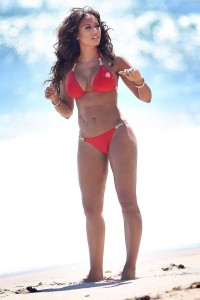Now, Mel B has come a long way from her rocker days as a Spice Girl with her bangin’ curls and funky moves. The following interview snippet encapsulates her experience, observations and perspective on what it meant to be mixed and what it is starting to be.
|
The message that comes through is that you do not have to pick a side to truly be yourself. Embrace who and what you are and enjoy the rocky in betweens that come with having a multiracial identity – it’s who you are after all.
In this excerpt from her recent autobiography Melanie tells the world her thoughts on mixed-race. ‘I was lucky that my parents were so cool about race when I was growing up. They respected each other’s cultures and mixed them and were happy about it, which was rare. They taught me always to respect both Black and White people. I’ve since noticed that Mixed-Race kids can get really confused if there parents sway one way or the other and are prejudiced against White or Black, because they become alienated from one side or the other.’ Where do the mixed people go? ‘It’s difficult because you’ve got your Black communities and you’ve got your White communities. There are Black churches, White churches, Jewish, Buddhist, Muslim and other places of worship, but you don’t get anything officially for Mixed-Race people.’ ‘I’m not saying that being Mixed-Race is a defined culture and has a history – well, it has got a history but it’s been taboo for a long time, because society has always been so divided. For centuries, Mixed-Race children were mainly associated with being products of rape, the result of forced encounters between masters and slaves on plantations. They were ignored, their existence swept under the carpet and they were part of a forgotten history.’ It doesn’t have to be one or the other ‘Things have changed now. We’re starting to mix more and you get people who are quarter this, a half that and a quarter something else, which is great. The only problem is that there are a lot of kids growing up who don’t feel they belong anywhere. Their identity isn’t black or white. I had problems knowing where I fitted in sometimes. I had Black friends and I also had White friends and some of my Black friends would be completely on the Black side dissing the Whites, while some of my White friends were completely on the White side and didn’t really know anything about the history of Black culture. They had no idea about all the suffering that had gone on.’ “My life was properly mixed, even down to the music!” ‘I was different to the other Mixed-Race kids at school because I never chose one side over the other. I got on with everyone and as a result I was called ‘Bounty’ – Black on the outside, White on the inside. I remember thinking, Why are they calling me that? My parents had Black friends and White friends and I spent time with my mum’s family and my dad’s family, so my life was properly mixed, even down to the music I heard at home – from Aswad to the Eurythmics’ |


 ‘There are a lot of kids growing up who don’t feel they belong anywhere. Their identity isn’t black or white. I had problems knowing where I fitted in sometimes.’
‘There are a lot of kids growing up who don’t feel they belong anywhere. Their identity isn’t black or white. I had problems knowing where I fitted in sometimes.’